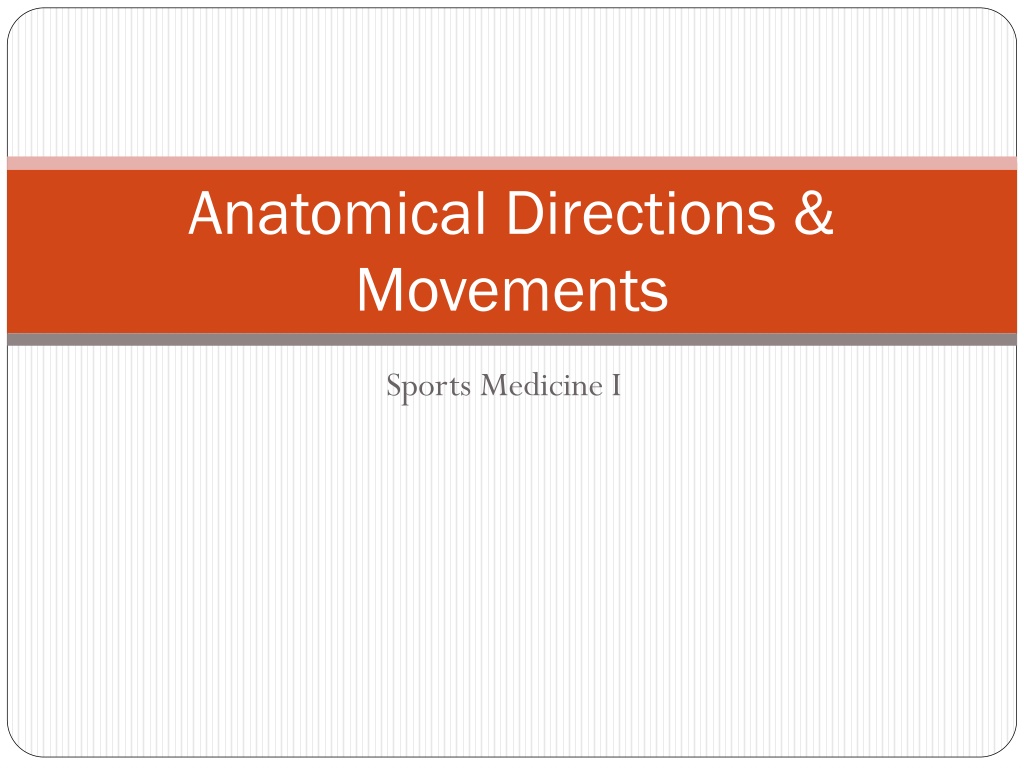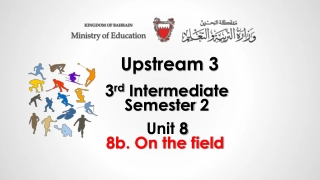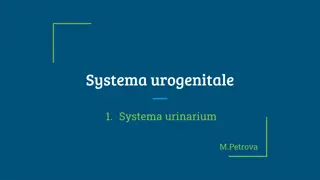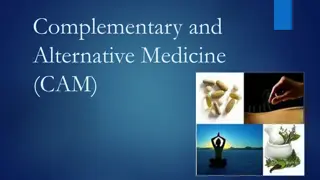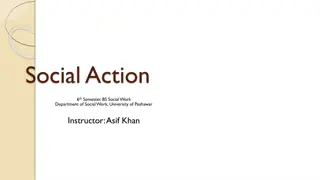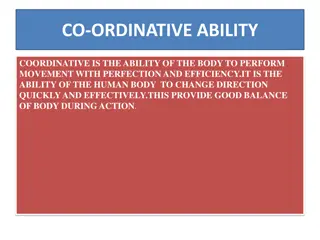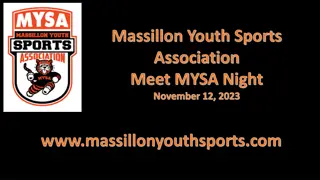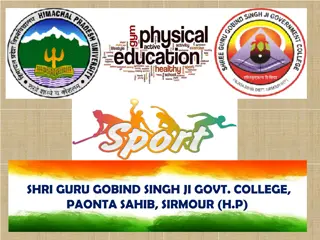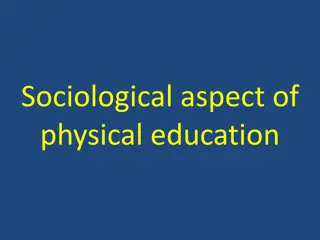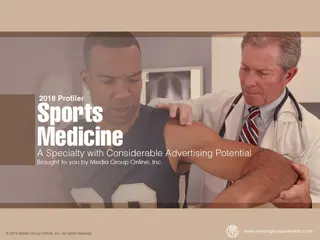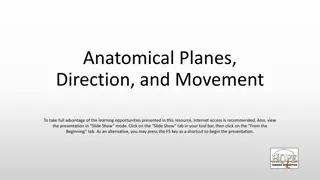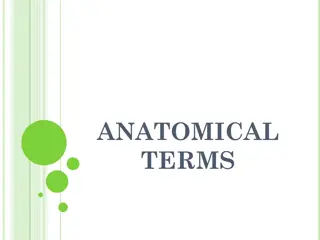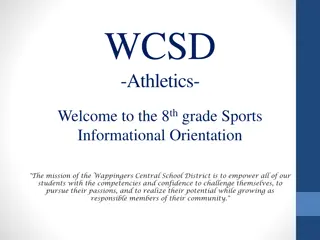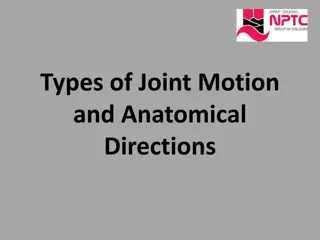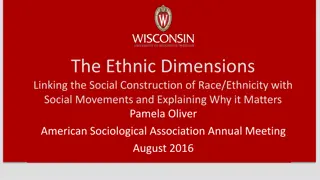Understanding Anatomical Directions and Movements in Sports Medicine
Anatomical directions play a crucial role in explaining the precise location of body structures in relation to each other. They are utilized regardless of the actual position of the body, with terms like superior, inferior, anterior, posterior, medial, lateral, proximal, and distal aiding in clear communication within the field of sports medicine. Learning these directional terms is essential for professionals and enthusiasts seeking a better understanding of the human body's movement and positioning.
Download Presentation

Please find below an Image/Link to download the presentation.
The content on the website is provided AS IS for your information and personal use only. It may not be sold, licensed, or shared on other websites without obtaining consent from the author. Download presentation by click this link. If you encounter any issues during the download, it is possible that the publisher has removed the file from their server.
E N D
Presentation Transcript
Anatomical Directions & Movements Sports Medicine I
Anatomical Position In this position, the body is erect with feet together and the palms face forward and the thumbs are pointed away from the body.
Anatomical Directions These are used to explain precisely where one body structure is in relation to another. These directional terms refers to an individual s body as if it were in anatomical position, regardless of its actual position.
Anatomical Directions Superior (cranial) Toward the head end or upper part of a structure or the body; Above
Anatomical Directions Inferior (caudal) Away from the head end or toward the lower part of a structure or the body; Below
Anatomical Directions Anterior (ventral) Toward or at the front of the body; In front of
Anatomical Directions Posterior (dorsal) Toward or at the back of the body; Behind
Anatomical Directions Medial Toward or at the midline of the body; On the inner side of
Anatomical Directions Lateral Away from the midline of the body; On the outer side of
Anatomical Directions Proximal Closer to the origin of the body part or the point of attachment of a limb to the body trunk
Anatomical Directions Distal Farther from the origin of a body part or the point of attachment of a limb to the body trunk
Anatomical Directions Superficial Toward or at the body surface
Anatomical Directions Deep Away from the body surface; More internal
Joint Movements There are 3 general types of movements: Gliding Angular movements Rotation
Gliding Movements They are the simplest type of joint movement. One flat, or nearly flat, bone surface glides or slips over another similar surface. The bones are merely displaced in relation to one another.
Gliding Movements They occur at the intercarpal (wrist), intertarsal (foot), intervertebral (spine), and sternoclavicular (sternum meets collarbone) joints.
Angular Movements These change (increase or decrease) the angle between 2 bones. They include flexion, extension, abduction, adduction & circumduction.
Angular Movements Flexion This is a bending movement that decreases the angle of the joint and brings the 2 articulating bones closer together. Flexion of the ankle so that the superior aspect of the foot approaches the shin is called dorsiflexion.
Flexion Hip flexion Knee flexion
Angular Movements Extension This is the reverse of flexion and occurs at the same joints. It involves movement that increases the angle between the articulating bones.
Angular Movements Bending the head backward beyond the upright position is called hyperextension. In the foot, extension or straightening of the ankle (pointing one s toes) is referred to as plantar flexion.
Angular Movements Abduction This is movement of a limb away from the midline of the body. When the term is used to indicate the movement of the fingers or toes, it means spreading them apart.
Angular Movements Adduction This is the opposite of abduction, so it is the movement of a limb toward the body midline.
Angular Movements Circumduction This is the movement in which the limb describes a cone in space. A pitcher winding up to throw a ball is actually circumducting his/her pitching arm.
Rotation This is the turning movement of a bone around its own long axis. It is the only movement allowed between the first 2 cervical vertebrae and is common at the hip and shoulder joints.
Special Movements Certain movements occur only at specific joints or areas of the body. Supination & pronation refer only to the movements of the radius around the ulna.
Special Movements Supination is the movement of the forearm so that the palm faces anteriorly or superiorly. In the anatomical position, the hand is supinated and the radius & ulna are parallel. In pronation, the palm is moved to a posterior- or inferior-facing position.
Special Movements Inversion & eversion refer to special movements of the foot. In inversion, the sole of the foot is turned medially. In eversion, the sole faces laterally.
Special Movements Protraction & retraction are nonangular anterior and posterior movements. The lower jaw is protracted when you jut it out and retracted when it moves posteriorly & returns to its original position.
Special Movements Elevation & depression Elevation means lifting. When the elevated part is moved downward to its original position, the movement is called depression.
